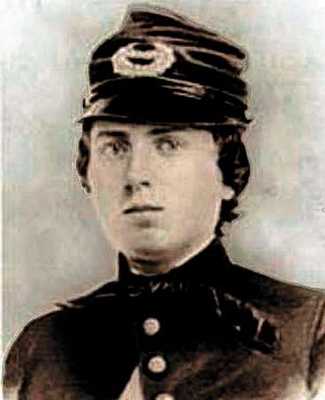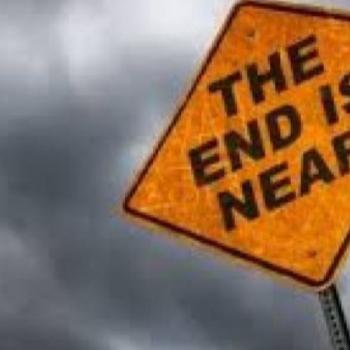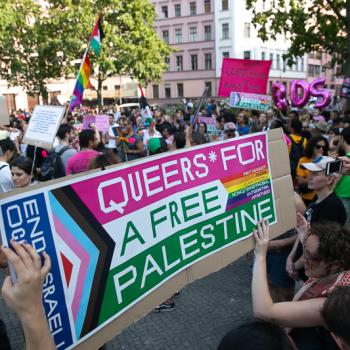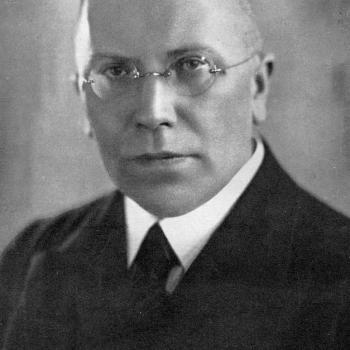President Obama will reward the Congressional Medal of Honor to two Viet Nam War vets, Sgt. Maj. Bennie G. Adkins and, posthumously, Specialist Donald P. Sloat (who jumped on a grenade to save three comrades). Also winning the nation’s highest honor posthumously is Lt. Alonzo Cushing, a 22-year-old who commanded an artillery battery that took the brunt of Pickett’s Charge at the Battle of Gettysburg. Read what he did after the jump.

Despite taking a pounding from Confederate batteries covering the charge that killed most of his men, with others running away, and despite being mortally wounded–having to hold in his intestines with his hand–young Cushing kept his guns firing. He fired his last round with his last breath. Some say that if it weren’t for his heroism, the Confederates might have broken the Union line and won not only the battle but the war.
Then again, the sum total of valor on the other side was arguably even greater, as 12,500 Confederates marched three-quarters of a mile in open country as Cushing and his comrades poured cannister shot–shells that turned a cannon into a giant shotgun–into their lines, killing and wounding thousands. And yet they kept on coming.
To this day, Pickett’s Charge stirs up strong feelings among many Southerners as a pinnacle of both heroism and tragedy. I suspect this is one reason Lt. Cushing had to wait 151 years to get his medal. Recently, Democratic Senator James Webb of Virginia personally blocked the award. How sad that Americans on both sides spent so much heroism against each other.
From Gregory Korte, 151 years after Gettysburg, a Medal of Honor awarded, USA Today:
Of the 3,487 men and one woman who have received the Medal of Honor, 644 have been awarded the nation’s highest military honor posthumously.
None has waited longer than Lt. Alonzo Cushing.
The White House announced Tuesday that it would award the honor to Cushing, a West Point graduate who died at age 22 in the battle of Gettysburg in 1863.
The announcement caps a four decade-long campaign by Margaret Zerwekh, an amateur historian from Cushing’s hometown of Delafield, Wis., who lobbied Wisconsin’s congressional delegation to pass a law waiving the time limits for making the award.
Congress finally did so in the National Defense Authorization Act passed last December, clearing the way for President Obama to make the award.
“That’s incredible,” said Zerwekh, 94 and in failing health. She became interested in Cushing after marrying her second husband, who had purchased the Cushing family property in 1947.
“He saved the union is what he did,” Zerwekh said.
In its announcement, the White House said Cushing “distinguished himself during combat operations against an armed enemy in the vicinity of Cemetery Ridge, Gettysburg, Pennsylvania, on July 3, 1863.”
Cushing wasn’t just any participant. He commanded a Union artillery battery that bore the brunt of the famous Confederate assault known as Pickett’s Charge. The spot where Cushing died would become known as the high-water mark of the Southern cause.
“Refusing to evacuate to the rear despite his severe wounds, he directed the operation of his lone field piece continuing to fire in the face of the enemy,” the White House said. “With the rebels within 100 yards of his position, Cushing was shot and killed during this heroic stand. His actions made it possible for the Union Army to successfully repulse the Confederate assault.”
Wikipedia adds these details:
Cushing commanded Battery A, 4th U.S. Artillery at Gettysburg, and was hailed by contemporaries as heroic in his actions on the third day of the battle. He was wounded three times. First, a shell fragment went straight through his shoulder. He was then grievously wounded by a shell fragment which tore into his abdomen and groin. This wound exposed Cushing’s intestines, which he held in place with his hand as he continued to command his battery. After these injuries a higher-ranking officer said, “Cushing, go to the rear.” Cushing, due to the limited number of men left, refused to fall back. The severity of his wounds left him unable to yell his orders above the sounds of battle. Thus, he was held aloft by his 1st Sergeant Frederick Füger, who faithfully passed on Cushing’s commands. Cushing was killed when a bullet entered his mouth and exited through the back of his skull. He died on the field at the height of the assault. . . .
Cushing has been nominated for a belated award of the Medal of Honor, beginning with a letter campaign in the late 1980s by constituents of Senator William Proxmire of Wisconsin. The measure has been also been advocated by Congressman Ron Kind of Wisconsin’s 3rd congressional district. [2] In 2002, Senator Russ Feingold of Wisconsin nominated Cushing for the Medal of Honor, and, following a lengthy investigation, the U.S. Army approved the nomination in February 2010. In order for the medal to be awarded, it had to be approved by the United States Congress.[8] It was announced on May 20, 2010 that Cushing would receive the Medal of Honor, 147 years after his death.[9] However, the provision granting Cushing the Medal of Honor was removed from a defense spending bill by Senator Jim Webb of Virginia in December of 2012.[10] Finally, in December of 2013, the Senate passed a defense bill that included a provision which granted Cushing the Medal of Honor. The nomination was sent for review by the Defense Department, before being approved by PresidentBarack Obama.[2] On August 26, 2014, the White House announced Cushing would be posthumously awarded the Medal of Honor.
From the Wikipedia article on Pickett’s Charge:
As Pickett’s men advanced, they withstood the defensive fire of first Stannard’s brigade, then Harrow’s, and then Hall’s, before approaching a minor salient in the Union center, a low stone wall taking an 80-yard right-angle turn known afterward as “The Angle.” It was defended by Brig. Gen. Alexander S. Webb‘s Philadelphia Brigade. Webb placed the two remaining guns of (the severely wounded) Lt. Alonzo Cushing‘s Battery A, 4th U.S. Artillery, at the front of his line at the stone fence, with the 69th and 71st Pennsylvania regiments of his brigade to defend the fence and the guns. The two guns and 940 men could not match the massive firepower that Hays’s division, to their right, had been able to unleash.[29]
Two gaps opened up in the Union line: the commander of the 71st Pennsylvania ordered his men to retreat when the Confederates came too close to the Angle; south of the copse of trees, the men of the 59th New York (Hall’s brigade) inexplicably bolted for the rear. In the latter case, this left Captain Andrew Cowan and his 1st New York Independent Artillery Battery to face the oncoming infantry. Assisted personally by artillery chief Henry Hunt, Cowan ordered five guns to fire double canister simultaneously. The entire Confederate line to his front disappeared. The gap vacated by most of the 71st Pennsylvania, however, was more serious, leaving only a handful of the 71st, 268 men of the 69th Pennsylvania, and Cushing’s two 3-inch rifled guns to receive the 2,500 to 3,000 men of Garnett’s and Armistead’s brigades as they began to cross the stone fence. The Irishmen of the 69th Pennsylvania resisted fiercely in a melee of rifle fire, bayonets, and fists. Webb, mortified that the 71st had retreated, attempted to bring the 72nd Pennsylvania (a Zouave regiment) forward, but for some reason they did not obey the order, so he had to bring other regiments in to help fill the gap. During the fight, Lt. Cushing was killed as he shouted to his men, three bullets striking him, the third in his mouth. The Confederates seized his two guns and turned them to face the Union troops, but they had no ammunition to fire. As more Union reinforcements arrived and charged into the breach, the defensive line became impregnable and the Confederates began to slip away individually, with no senior officers remaining to call a formal retreat.















